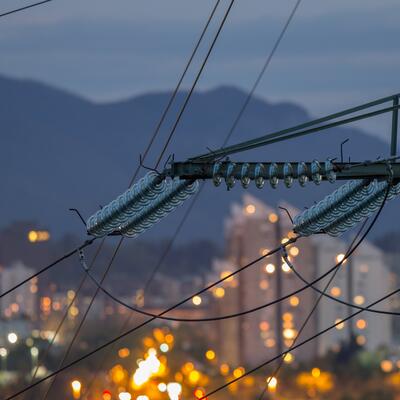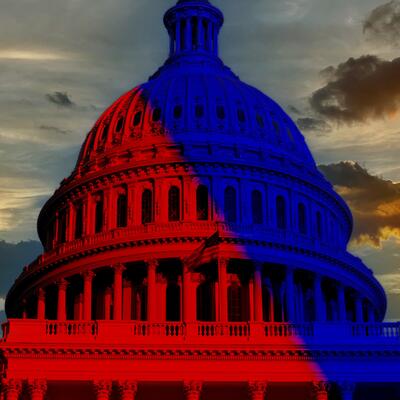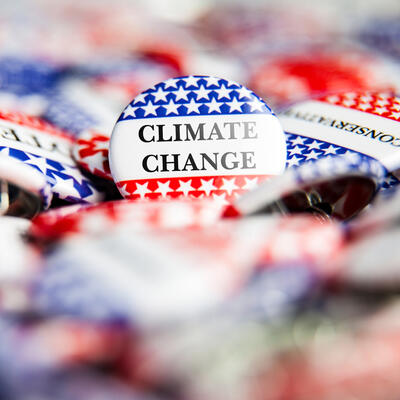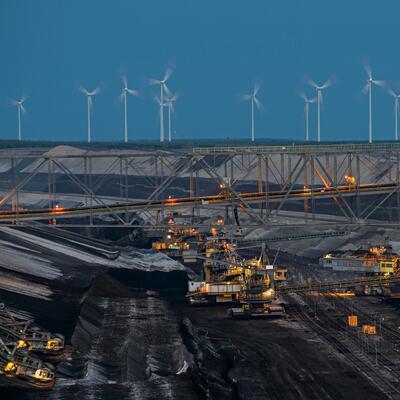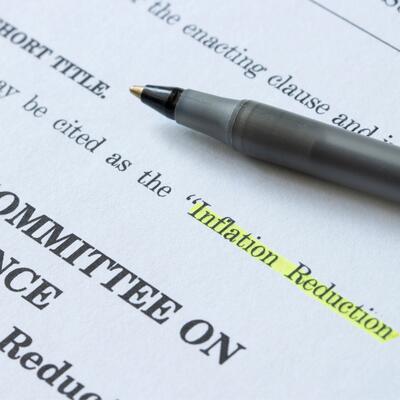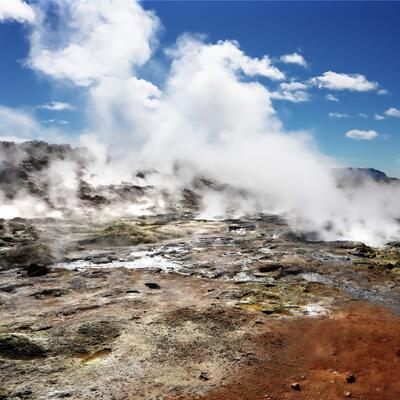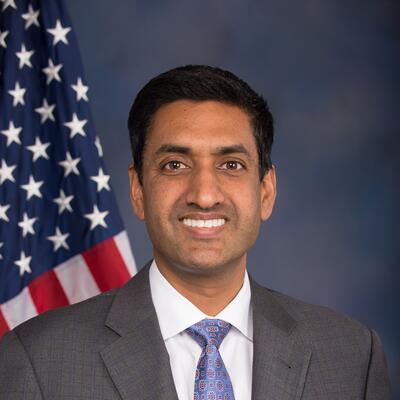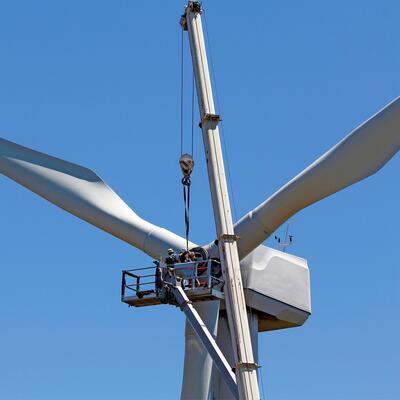
Trump Breaks Wind?
Guests
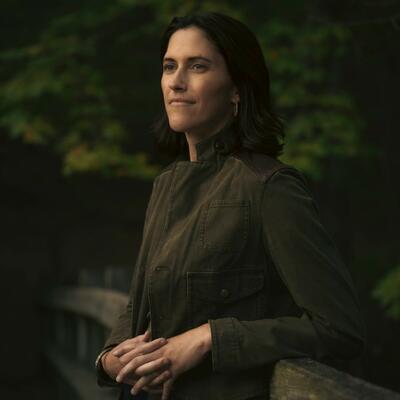
Clare Fieseler
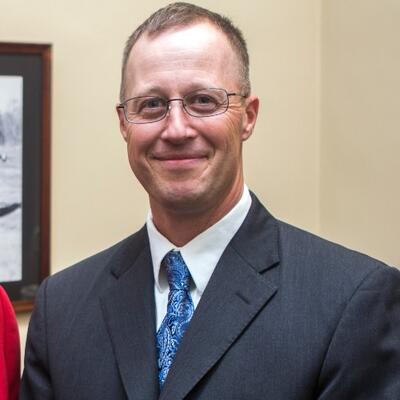
Jed Welder
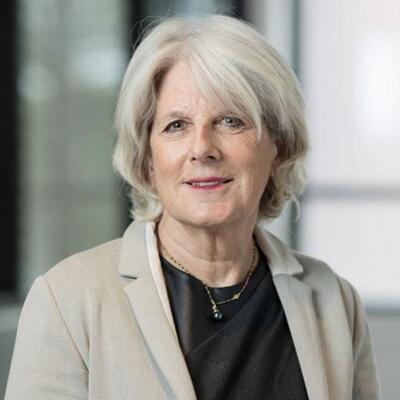
Barbara Kates-Garnick
Summary
“Coming into [the] Biden administration, there were zero commercial scale offshore wind projects approved in America. But at the end, after four years, it was about a dozen,” says Clare Fieseler, a reporter for Canary Media who covers offshore wind energy.
Now the Biden era is over, and it’s no secret that President Trump is not a fan of wind energy. As a matter of fact, he signed an executive order on his first day back in office that paused leasing for any new or renewed offshore wind energy projects and required the re-evaluation of all wind projects. That has put the twelve already-approved offshore wind projects into limbo.
“Trump has a personal vendetta against offshore wind because of an experience that he had with it in Scotland,” says Fieseler. “And if we know anything about Trump, it’s that he can hold a grudge.” The president owned a golf course in Scotland where he claimed an offshore wind project would ruin the view. He fought the project, hard. But in the end the turbines were built.
Moderate and right leaning politicians used to call for an “all of the above” energy policy. Now that Trump is back in office, Fieseler says, “There's this new saying around Washington: we have an all of the above approach to energy – except for offshore wind.”
In Somerset, Massachusetts, the Prysmian Group was planning to build a factory that would have manufactured underwater cables to carry electricity from offshore wind farms to the onshore grid. The factory would have created at least 150 new manufacturing jobs across the water from Fall River, a city of 95,000 people. But not long after Trump’s executive order, the Prysmian Group decided not to follow through with the project. Reporter for The Public’s Radio Ben Berke says, “The disappointment comes with a twist of irony. President Trump won Fall River this November. It was the first time in a hundred years the city voted Republican.”
“We joke that the fastest way to get into a fight in a bar is to bring up wind and solar,” says Jeb Welder, owner of Trinity Farms in west Michigan. Welder is a farmer who, along with other local farmers, was approached by a wind developer in 2019 about the possibility of leasing their land for wind turbines. Wedler and the other farmers did their due diligence and talked to farmers in other towns who had leased their land for wind turbines. None had a negative thing to say. So Welder thought the project proposed in his town would be a slam dunk. That ended up not being the case.
“We were really blindsided when the opposition ramped up in a big kind of a way,” says Welder. The advocates of the wind project faced accusations of greed. Opponents cited changes to the viewshed and dubious health-related concerns. Both wind and solar projects have faced such opposition even before the current administration’s policies. Yet this time, it feels different, says Welder, “ It cut through party lines, it cut through families, it cut through farming communities. And this was an area that really hadn't seen much controversy.”
“Onshore wind before Trump two was blossoming,” says Barbara Kates-Garnick, Professor of Practice at Tufts University’s Fletcher School. While the current administration has been harsh on offshore wind, onshore wind has not faced quite the same treatment. Part of the reason for the softer treatment might be the fact that the areas where there is most potential for harnessing wind energy happen to be in GOP districts and states. Think Texas, Oklahoma, and Iowa.
Some Republicans in the House of Representatives are standing up for keeping Inflation Reduction Act tax credits for wind energy in their districts. “ I was really encouraged to see the recognition that these Republican legislators, whose states had received the benefits, were now becoming vocal,” says Kates-Garnick.
The question remains: will President Trump be able to destroy the wind industry in the US? Kates-Garnick says, “ He will slow it down. Projects that are in development permit-wise will come online. We will not see the cost reductions that we would like to see. I think there's going to be a harm, but I don't think it's a destruction.”
This episode features reporting from Ben Berke of The Public’s Radio.
Episode Highlights
4:06 - Reported Piece Summerset, MA
8:16 - Clare Fieseler on the state of offshore wind before the new administration
9:51 - Clare Fieseler on offshore wind projects under the Trump administration
16:46 - Clare Fieseler on wind energy components being manufactured in red districts
19:10 - Clare Fieseler on why offshore wind is more accepted in Europe
29:51 - Jed Welder on his time in the army
35:05 - Jed Welder on how the wind project divided the community
44:28 - Barbara Kates-Garnick on onshore wind prior to second Trump term
49:42 - Barbara Kates-Garnick on projects in Trump districts
Resources From This Episode (4)
Full Transcript
Note: Transcripts are generated using a combination of automated software and human transcribers and may contain errors. Please check the actual audio before quoting it.
Ariana Brocious: I’m Ariana Brocious.
Kousha Navidar: I’m Kousha Navidar
Ariana Brocious: And this is Climate One
[music change]
[Playback: 1970’s Wind Energy PSA]
Wind energy. This endless non polluting free fuel has been used in a variety of ways for thousands of years. From grinding grain and pumping water to generating electricity.
Kousha Navidar: Generating electricity. That’s where we come in. Wind energy has come a long way since that recording from the ‘70s. Ariana, how important would you say wind energy is when we talk about addressing the climate crisis?
Ariana Brocious: Pretty important. It’s one of our two dominant renewable energy technologies. And some states already get a substantial amount of their energy from wind — about 30% in Texas and nearly 60% in Iowa. And other parts of the country also have a lot of wind potential.
Kousha Navidar: Yeah and just like solar, once you have the infrastructure built, the fuel is free! That's why you still see old-school windmills dotting the farmlands.
Ariana Brocious: Exactly. And, wind can also be good in combination with solar because oftentimes the wind picks up when the sun isn’t shining. But in spite of those advantages, not everyone is a fan.
Kousha Navidar: Nice! Thank you.
Ariana Brocious: I used to live in Nebraska and remember reporting on a very contentious wind proposal in a rural agricultural area. People really didn’t want it messing up the view.
Kousha Navidar: I know someone else who really doesn’t like wind energy. Want to guess who? President Trump. He’s known for throwing out all kinds of false claims about wind energy – blaming wind turbines for causing cancer, massive whale deaths, and more. He continues to say that wind is the most expensive form of energy generation. Which, fact check alert, that’s not true. Wind-generated electricity is now cheaper than electricity from coal.
Ariana Brocious: Yeah, these renewables have gotten really affordable. Wind is actually tied with solar for the cheapest way to generate electricity, period.
Kousha Navidar: And while the President is all about energy dominance, he has a special distaste for wind.
Ariana Brocious: Yeah, I remember something years ago about him being upset by off-shore wind turbines, right - and not even in the US?
Kousha Navidar: Yes, it seems to go back to a golf course he owned in Scotland. They were going to build wind turbines off the shore of his course.
Donald Trump: If they put these monstrosities in Aberdeen Bay, the countryside will no longer be beautiful.
Kousha Navidar: So he fought hard against the turbines, even testifying before the Scottish Parliament in 2012.
[Playback, Trump 2012]
Wind turbines made in China are going to be the destruction and they almost a total destruction of your tourism industry.
Ariana Brocious: Wow. In the end, those turbines were built. And all these years later, he still doesn’t like wind energy. I mean, he even mentioned it in his inauguration speech.
Kousha Navidar: That’s right, he said “we’re not doing the wind thing.”
Ariana Brocious: To follow up on that, on his first day in office he signed an executive order pausing offshore wind permitting and leasing indefinitely, and ordering a review of all wind projects.
Kousha Navidar: And Ariana, that has already had an effect, not just on the production of wind farms themselves, but also the companies that manufacture components – think of the tower, or the blades – that are necessary to build the wind farms or connect them to the grid. Those companies were already dealing with supply chain issues. So what was once a very promising energy sector is now very much facing uncertainty. Or facing strong headwinds..if you will…
Ariana Brocious: Oh nice, very nice. Yes that’s true, And that’s exactly what happened in Somerset, Massachusetts. The manufacturing company The Prysmian [priz-me-ann] Group had planned on building a plant that would make underwater cables necessary for offshore wind projects, they need these to transmit the electricity they generate way out at sea. Reporter Ben Berke from The Public’s Radio takes it from here.
Ben Berke: Lloyd Mendes lives in the Brayton Point neighborhood of Somerset, Massachusetts - a place where pristine nature rubs up against big industry.
Lloyd Mendes: We have osprey here. We have red-winged blackbirds. A beautiful place here. Even though it's next to a power plant. Here, hold on. Let me get my coat on.
Berke: Mendes takes me hiking along the beach in the salt marsh near the old Brayton Point Power Plant. The plant was the biggest employer in town before it closed in 2017. Most of it's been demolished, leaving behind 200 dusty acres of land with deep water access. This real estate eventually caught the attention of an Italian company that manufactures undersea cables for offshore wind farms. Mendes spent many late nights in town meetings vetting a proposal the company put forward.
Mendes: They were going to buy 47 acres, and they were going to put a huge factory there. It was a great deal. I totally supported it.
Berke: The Prysmian Group's cable factory would have created at least 150 new manufacturing jobs across the water from Fall River, a city of 95,000 people that used to be filled with textile and apparel factories. From the top floor of Fall River's government center, Mayor Paul Coogan has a view of the waterfront, where Prysmian was planning its factory.
Paul Coogan: It's sad. I can see it from here, and I can only imagine the number of people that went to work there from Fall River.
Berke: The disappointment comes with a twist of irony. President Trump won Fall River this November. It was the first time in a hundred years the city voted Republican. Then just a few weeks later, Prysmian canceled its plans to build the cable factory. The company declined an interview request and said, in a prepared statement, that Prysmian is aligning manufacturing capacity with changing market demands. Politicians who represent the area, like Democratic Congressman Jake Auchincloss, blame Trump for Prysmian's sudden shift in outlook, even though the company didn't mention the president.
Jake Auchincloss: Prysmian won't do it, but there's no question that Trump's moratorium had a decisive impact on Prysmian's decision.
Berke: Trump strongly favors fossil fuels like oil and natural gas. On his first day in office, he issued an executive order banning future leases of federal waters to offshore wind developers. Elizabeth Wilson teaches environmental studies at Dartmouth College. She says international manufacturers won't build American factories unless they can count on lots of domestic offshore wind projects getting built. Wilson says Trump is not only refusing to approve new projects, he's threatening wind farms that were already under development.
Elizabeth Wilson: That level of political uncertainty does not provide a stable investment climate for companies to build significantly large manufacturing facilities.
Berke: The economic impact could extend far beyond New England. Costa Samaras is a former adviser in the Biden administration who now researches energy innovation at Carnegie Mellon University. He says there are plans to build or expand at least 23 American factories to manufacture offshore wind components.
Costa Samaras: And a lot of that is at risk.
Berke: Samaras says many of these 23 factories represent huge investments in cities that lost their founding industries.
Samaras: When we talk about billions of dollars or number of factories, we got to remember that these are people - people's jobs, people's livelihoods, people's communities.
Berke: In Somerset, Prysmian's factory could have pulled the town out of a hard financial situation. Somerset lost half its property tax revenue when the power plant closed. And with offshore wind development paused under President Trump, it's unclear when the town will recover.
Kousha Navidar: That story was reported by Ben Berke at The Public’s Radio.
Somerset isn’t the only town facing uncertainty amid President Trump’s pause on offshore wind. To find out just how much Trump’s policies will affect the offshore wind industry, I invited Clare Fieseler to help me unpack it.
Fieseler is a reporter for Canary Media and this is her beat. Before we got into the effects of Trump’s policies, I asked her what the state of the offshore wind industry was prior to the current administration.
Clare Fieseler: During the Biden administration, two things were happening. One tremendous momentum in permitting, like permits were going out. Projects were being approved to get built. Almost a dozen projects coming into Biden administration. There were zero commercial scale offshore wind projects approved in America, at the end, after four years, it was about a dozen and one was built. One came online. Another thing that was happening were some bumps in the road related to costs and finances. Some of that had to do with inflation. Some of that had to do with supply chain issues. So the projects were getting costlier. These are huge infrastructure projects. Offshore wind electricity is quite cheap once it's built, but to build it costs a lot of money. So projects
Kousha Navidar: Cuz the things are so big, right? Like we're talking about gigantic pieces
Clare Fieseler: absolutely huge. They're absolutely huge. Uh, I was just actually in New England seeing them for myself. Like, they look like spaceships lit up at night at the port. Like, they're so big. Um, and so, so some projects had to be refinanced. They had to kind of either borrow more money or estimate, you know, kind of higher costs. So those kind of two things were happening at once. And then Trump came into a new administration.
Kousha Navidar: Okay. So a few things are going on there. So before Biden started, there were zero offshore wind projects in the U S that jumped up to 12. Um, but because it's during the pandemic, you're saying, and these things are so big and expensive supply chains and inflation's an issue. So what about now of those 12 projects? What's the state of affairs? What does the landscape look like during the Trump years?
Clare Fieseler: Right. So of the 12 projects that were approved by Biden, one got built and started working about this time last year, March of last year, and it's powering about 70,000 homes on Long Island. Uh, those other projects, those are in the process of being built now. Uh, so this is a really critical time for offshore wind, right? There, there, there's. You know, kind of like pile driving happening, the turbines are going to being put on. There's all the ships building them. So what we have right now, there are nine commercial offshore wind projects that have all federal permits in hand. There's a little asterisk to that statement. We can talk about that a little bit, but but nine can go forward. Um, and of those about five are in various stages of construction. but some people think that Trump could even stop those that are already in construction.
Kousha Navidar:Well, I want to also talk about something that you, you mentioned about actually going out in New England and seeing some of these projects. What was that like?
Clare Fieseler: Yeah. So New Bedford, Massachusetts is this old whaling town, and when you drive around, you can tell, it used to be one of the wealthiest cities in America because of whaling. The town hall is like all ornate, it has this like old elevator that's like almost all gold, still operating. When I interviewed the mayor, I got to go, it's the oldest. I think operating elevator in America is all gold. It's just very ornate. You can tell this port was bringing a lot of money. Uh,
Kousha Navidar: Yeah.
Clare Fieseler: it has for almost like 150 years, and it's still actually, the most profitable port for fishing, like by a long shot, more so than any port in Alaska. So it's still a very active port, but now you have this new industry of offshore wind, right? And it's bringing in so much money. What I saw driving around New Bedford, Massachusetts was one, there was the port had all been updated, right? So that was helping the scallop fishermen. It was also helping the offshore wind companies and add these newly kind of, renovated terminals, they're, they're the staging grounds to assemble these giant turbines. And so you have these tall towers, right? some are about half, you know, half the size of, of Eiffel Tower, uh, once fully assembled. And just the blades themselves. I kind of took a picture of my car. Uh, it was like a little, SUV, kind of parked next to one of these blades that was lying, you know, kind of horizontal. And there, you know, it was like end to end, like 10 of those cars just for one of the blades. Right. So these things are absolutely massive.
Kousha Navidar: So you have to step very far back to get that picture.
Clare Fieseler: yeah, yeah. And it was like blowing rain and it was really hard. Um, and I don't think it really hit me until I saw it in person, how big these projects are, but also that it's happening. Like these were blades that were like going out on boats to be put onto turbines that are actually in the water. You know, this isn't just some concept that we're bringing out from Europe. This is something that's actually being every day in America like right now.
Kousha Navidar: And I guess maybe to your point, there's this narrative of like, what, What is going to happen with these projects moving forward under a new administration from your experience, at least in New England, some of these projects are still moving forward, right?
Clare Fieseler: Yeah. Yeah. So up right off of New Bedford, Massachusetts, you have Vineyard Wind One and Sunrise Wind. Those are both being built. You also have Revolution Wind being built off the coast of Rhode Island. And then Empire Wind, uh, is slated to start May 1st and that's off the coast of New York. Uh, and then down in Virginia, you have, uh, the Dominion Wind Project that's, that's also going forward. That's the largest being built right now.
Kousha Navidar: You mentioned Dominion Energy. Can we talk about their project for a little bit?
Clare Fieseler: Yeah. Dominion Energy in Virginia is really interesting, uh, for a couple reasons. One, um, Virginia is a purple state, uh, and that project has the backing of a Republican governor, Governor Youngkin. And another reason is that Dominion, who is building the project, they are a state regulated utility. Most of the projects being built in New England are being built by these European companies. But Dominion is an American company. Uh, they are the state regulated utility. and so that just means that, um, you know, should Trump want to halt that project in some way, the people who are going to bear the brunt of those sunk costs are not some European company, but actually the rate payers, residents of Virginia who pay the electricity bills. That's what makes Dominion really different. and I think probably a model going forward for building offshore wind in America is to have the utilities build them.
Kousha Navidar: You had mentioned of those 12 projects, I think you said like nine were permitted, five are moving forward, and there was an asterisk. I wanted to get back to that because maybe that's an example of something where there are some other lessons to be learned or the projects are not going that well. So what was that asterisk that you mentioned?
Clare Fieseler: Right. So I mentioned that, like, when Trump took office, nine commercial scale offshore wind projects that hadn't been completed, uh, had their permits in hand to be completed. Um, now, since then, within the past week, actually, the EPA revoked the clean, Clean Air Act permit for Atlantic Shores in New Jersey. And so now Atlantic Shores, being one of those nine projects that had all the permits in hand, is missing that one federal permit for clean air. this is a really, we don't know, this just happened like a week ago. We don't know what's. How that might affect these other projects, whether this is a model going forward of essentially revoking these smaller permits, like, you know, you need, like, 10 different federal permits to build each offshore wind farm. Um, so whether kind of revoking these kind of lesser permits, Clean Air Act, Marine Mammal Protection Act could be a way of kind of undermining the projects that want to go forward. I think this example with Atlantic Shores shows that the Trump administration is trying to find ways to stop these projects that, The Biden administration worked so hard to fully permit.
Kousha Navidar: Do you find there to be any irony that a lot of the jobs that would manufacture the Parts for offshore wind turbines might also be in GOP districts?
Clare Fieseler: Yeah, so I, I reported this story, um, back in January, uh, looking at this data that showed that 67 percent of the offshore wind supply chain or the investment in that supply chain are in GOP led districts. And
Kousha Navidar: That's like two thirds. That's almost exactly two thirds.
Clare Fieseler: Exactly, exactly. You know, all the ships, like, are being built in Florida and Louisiana. The offshore wind cables are being built in South Carolina. The welding is being done by companies in Ohio and other, you know, the Rust Belt. So, you know, this is a huge component. Yes, there's, like, the wind farms, and they happen to be, like, offshore of these blue states. But the whole supply chain and all the jobs, all the great jobs that this industry is creating, the vast majority are in these red districts. And so I think that's why a lot of people are frustrated that Uh, Republicans on Capitol Hill aren't saying more to advocate for offshore wind since their districts could lose jobs should the industry collapse. So it's this kind of this irony of the politicization of offshore wind.
Ariana Brocious: We’ll hear more from Clare Fieseler after the break. And we’ll hear from a farmer who faced fierce local opposition to a proposed wind farm he thought would be a slam dunk.
Jed Welder: We joke that the fastest way to get into a fight in a bar is to bring up wind and solar.
Ariana Brocious: That’s up next, when Climate One continues.
Kousha Navidar: Help others find our show by leaving us a review or rating. Thanks for your support!
This is Climate One. I’m Kousha Navidar.
While offshore wind farms are controversial in the US, in Europe, they’re much more accepted. The UK, for example, shut down its last coal power plant in 2024, in large part thanks to wind energy. In fact, wind has been the primary source of electricity for the UK in the last year.
I asked Clare Fieseler, reporter for Canary Media, why offshore wind is so much more accepted in Europe.
Clare Fieseler: I think it just comes down to resources. I mean, look at the United Kingdom, look at Ireland, they don't have vast. reserves of natural gas like we do, right? They've got a lot of wind, right? They don't, they also don't have a ton of land to do this, these large farms, but they've got a lot of wind. So a lot of these smaller companies are importing energy from other parts of like, you know, Eastern Europe or Russia. And I think they're very eager to get off of Russia's oil reserves. And what better way to do that is than to harness wind, which they've got a lot of.
Kousha Navidar: And some of these jobs in the US are actually serving Europe is what you're saying. Europe markets.
Clare Fieseler: I will say that the one thing I've heard about, people working and serving in offshore wind is that these are really good blue collar jobs. I was talking to fishermen that are getting contracted to help with, um, offshore wind projects, you know, this is their off season, you know, this is how they're supplementing their income, and the fishermen I spoke to who work for these offshore wind companies, they're all Trump voters and they weren't afraid to say that.
Kousha Navidar: Right? That's kind of what I was getting at. Sorry. But yeah, exactly. Okay. Yeah. So tell me about that. What's their impression of Trump's wind policy? Like, what are they saying?
Clare Fieseler: Yeah. So the irony here is that, the fishermen I've spoken to that are helping build some of these offshore wind projects in New England, they're all Trump voters and they see no problem with helping build offshore wind in America because it's a job for them, you know? Their view, when I asked about whether they think that Trump could kill the industry, is that they're doubtful Trump could do this or wants to. One of them I spoke to in New Bedford said he thinks it's just kind of a lot of, I guess, pun intended, Trump being a blowhard, you know, when it comes to wind, and making a big show of it, but at the end of the day, they don't think Trump would stop all the projects. I mean, one thing I want to mention is like a New Bedford Massachusetts. When you drive down to the fishing docks, some of these fishing boats, they're flying Trump flags. And one of the fishermen I talked to was like, Oh yeah, that guy over there. You see that you should see that boat when he goes offshore and works for Orsted, which is an offshore wind company, before he motors out, he, he, he takes down that Trump flag, right. And so, and they see no problem with it.
Kousha Navidar: That's so funny to Yeah. Yeah. To like put on the new decal based on where you are for your job. We talked a bunch about red states. Let's go to some of the blue states because they have looked to offshore wind to get their states to net zero. Um, you know, you mentioned New York. There's a whole bunch of others. Uh, those targets are in serious doubt now. So how do you think those states are going to navigate this new landscape we're talking about?
Clare Fieseler: I think no one knows yet. No one quite knows how, uh, states like New York, New Jersey, Massachusetts can get to net zero by 2030 or 2050, without offshore wind. I want to say quickly that Biden had set this goal of developing 30 gigawatts of offshore wind in America, uh, by 2030. And I was speaking with a professor at Tufts University and her back of the envelope calculation is that by 2030 at this point, we'll only get to five. So we're going to get to five gigawatts of the 30 gigawatts that Biden wanted to get to. And that's because–
Kousha Navidar: So just a sixth, a sixth of the way there.
Clare Fieseler: Yeah, but is that a critical mass of projects to sustain a supply chain in America to keep things moving? Um, it could be. It could be.
Kousha Navidar: Yeah. Keep the momentum going kind of thing.
Clare Fieseler: Yeah. Like, it, like, we're not at the point right now where Massachusetts needs to revisit its decarbonization plan and say, well, you know, we're going to assume there'll be no offshore wind coming on our grid in the next 10 years. So let's rewrite it all yet. We're not at that point yet. One thing I want to say about New York, you know, New York has really invested heavily in developing offshore wind and I do know that the governor of New York met with, with Trump recently to have a negotiation, uh, about a pipeline that would come through New York and to serve to provide natural gas. And part of that negotiation was essentially her saying, you know, well, okay, you want this pipeline coming through New York, but we also want to make sure our offshore wind farms are protected. Now, what was the outcome of that closed door meeting? I don't know. I haven't seen it reported out. Um, but I think that, uh, New York is coming to Washington to lobby for its ability to still develop these offshore wind, um, projects because they need it for their state decarbonization goals.
Kousha Navidar: Elsewhere in the episode, we speak with a farmer who faced fierce opposition to leasing his land for wind turbines, and a factor in the opposition was rampant misinformation. Can you tell me a little bit about what role you see misinformation playing in the wind industry right now?
Clare Fieseler: Yeah, when it comes to offshore wind specifically, misinformation has really exploded over the past two years. So, uh, there was an article, uh, that was written in the Daily Caller, which is a, Republican leaning online news site about wind projects maybe killing whales in Rhode Island. And then that got republished in like a local newspaper. And that was kind of the start of like misinformation about wind and whales, uh, but, you know, starting two years ago, it just exploded. And, on inauguration day, Trump is essentially repeating that same misinformation is in his inauguration speech. And so we're going from like one Daily Caller article, you know, six years ago, uh, to Fox news to all of a sudden it's being uttered by you know, the president on,
Kousha Navidar: At the inauguration.
Clare Fieseler: it just shows the trajectory of this one type of misinformation. Now, there's other misinformation out there. Um, like, one thing I reported on for Politico last summer was about what's happening in my hometown in New Jersey, a coastal town, about misinformation that the offshore wind cables that are coming on to land would cause cancer, And we know that's not true. But it showed up in little postcards that appeared in people's mailboxes in this town where offshore wind projects are going to come ashore. So it's become a huge block for this industry. And It's unclear how to fight it when the president is repeating it.
Kousha Navidar: Is it clear where the misinformation is coming from like in your home right now like who sent out that mail?
Clare Fieseler: Yeah. It came from a political oriented organization, um, in this, within the state, um, and, and some of this misinformation is being fueled, by think tanks that have fossil fuel backing. Um, and so I think it takes a life of its own where it. It gets planted by, like, com by organizations that have fossil fuel backing or far right.
Kousha Navidar: Political financial interest basically
Clare Fieseler: And then it morphs and I want to say like misinformation metastasizes, uh, you know, within an absence of accurate information. And so in New Jersey, I don't think the state, based on my reporting, did a a very good job informing what these were doing and where they were going to be and what they, you know, the harms and risks and so forth.
And so in the absence of that information, these little postcards that got put in mailboxes, like in my parents on Jersey shore, like that's the only information they have. Right. So. Um, and so it's really up to the states to do really good engagement. Virginia has done a really great job of engaging local communities. Um, you've seen far less pushback in Virginia than you have in other places.
Kousha Navidar: We have covered so much in this interview. And we started off with what the state of affairs was before. What it's like now. I gotta wonder what do you think is the outlook for the offshore wind industry Claire?
Clare Fieseler: So my view is that there will be projects that will be completed under this administration. I think we will get at least three, if not four or five. And that, as my great aunt Ginny likes to say, that's not nothing, right? There's a lot of reporting that has kind of sensationalized Trump's executive order and his assault on offshore wind and, you know, I think that that to sensationalize it actually does a great harm to the industry because then the industry feeds off of new sentiment, right? We know that, you know, investors are affected by news sentiment. So if the sentiment within the news is that, uh, like Trump has killed offshore wind, then that's going to make investors nervous. That's going to make companies nervous and so forth. I think we need to be, uh, a little bit rational here and say projects are being built. There's blades being stalled as we speak right now. Um, and so has he crippled the industry? Yes. Has he killed it? Nowhere close.
Kousha Navidar: Claire Feiseler is a reporter for Canary Media. Claire, thanks so much for hanging out with us. Really appreciate it.
Clare Fieseler: Thanks for having me.
Ariana Brocious: The Trump administration is certainly working against wind energy. But the industry faced some speedbumps well before that, often due to the physical presence of wind turbines and their high visibility on the landscape.
In 2020, a developer by the name of Apex Clean Energy approached farmers in West Michigan about leasing their land for wind turbines. One of those farmers was Jeb Welder, who was also a town trustee. Welder already had a positive impression of the industry, having seen wind turbines abroad during his time in the Army.
Jeb Welder: Once I got my commission in the Army, I served in a number of different places, including leading some teams up from Afghanistan into Germany, um, and . Southern Germany's beautiful. And you'll see wind turbines dotting the ridge lines and the hillsides. And I thought that is, that is so unique and so beautiful that you can make electricity from the wind. And it, I thought, wow, I wonder why we don't ever see that back home. and then once I came back to the farm and started working in that industry, um, those opportunities started coming up and we started hearing some rumblings that there would be some wind development.
Ariana Brocious: You own and operate Trinity Farms In West Michigan, you grow soy, wheat, and corn. Ariana Brocious: So when did wind energy come into the picture, for you in terms of a possibility to bring onto your property or other properties, other farms in the area?
Jeb Welder: Well, in 2019 there was an initial meeting between a wind developer, a number of farmers and landowners. Just a, a small meeting. There weren't more than a dozen of us.and they described, uh, how, what wind brought to an area I. How that improved the tax base, um, what the setbacks were, what we could expect as farmers as far as a return on our, our investment. And once that came about, we looked into it because there was some wind going into the counties to the east of this. And I was on a township board at the time. So we talked to some township trustees in those areas and really didn't, couldn't find a downside for us. and perhaps I was a little naive at that point, and I was very transparent. I thought, Hey, this is a great thing. as part of my duties on the township board, I was in charge of road funding. And we were always trying to get a few more percentage points of our budget dedicated to our township roads. Try to get another layer of gravel, try to get a little bit more chloride put on so the dust didn't come up for people or, or heaven forbid we get another road paved. Um, it was a continuous process, so having something like that to be another funding mechanism to go back in, as well as allowing farmers to have another income source on their land just seemed like a good thing.
Ariana Brocious: What did the other farmers in your area think about this at the time? I think you went and kind of . Uh, got some information from neighboring counties, neighboring areas. What did they say about their experience with wind?
Jeb Welder: Sure. So the, the farmers in our neighboring counties didn't have a bad thing to say about them. Um, crop prices were, were depressed at that point. Um, I. And it wasn't really a radical concept. We lease our land for mineral rights, for possible development. We lease our land for hunting rights. Um, and those are income streams. And so this seemed like another way to do that. I. When we looked at the wind turbines, their footprint on the ground would take up an acre of land, but you could farm all the way around them. And the, the leases that we were looking at gave us right of refusal on where they were placed in case they would interfere with our irrigation pivots or the tile, tile that was under the ground. So again, in talking to those farmers, there wasn't a downside in talking to the officials at the township levels or the road commission, or the police or the fire, and especially the schools. There wasn't a bad thing to say from that perspective either. So we were really blindsided when the opposition ramped up in a big kind of a way.
Ariana Brocious: You have said you were surprised at the scope and scale of, of opposition to this project, given all the benefits you just listed. So what was that like? How did that, um, come about? What did it take the form of?
Jeb Welder: Well, um, this was 2020, so Covid was coming in and local communities were trying to react to that and having everything going to Zoom. And it was really a, a strange phenomenon that it's much easier to call someone a greedy farmer or a corrupt politician when you're on a Zoom conference call than it is when you're looking someone in the eye. And it's much easier to have a conspiracy theory really take root. When you're dealing with this unknown coronavirus at the same time as everything was shut down and going to zoom. And I think it was really a perfect storm at that time that that caused this uproar to really gain a lot of steam.
Ariana Brocious: Have there been other issues or, um, controversies that have come up in the time you've lived there that have had the same result, that have been as divisive for the community?
Jeb Welder: Absolutely not. We joke that the fastest way to get into a fight in a bar is to bring up wind and solar. It was absolutely divisive right down through, and it cut through party lines, it cut through families, um, it cut through farming communities. It, it really did. And this was an area that really hadn't seen much controversy. Um, there was some controversy over marijuana four or five years prior to that. Um, but nothing every, there were times when reasonable people could disagree without being disagreeable and could disagree without it coming to blows and, and having an impact on families. And so it, it was really surprising.
Ariana Brocious: And what were the main concerns from opponents who didn't wanna see the wind development?
Jeb Welder: Well they ranged from, the horses will have abortions and the children will have epilepsy. And the infra sound that's generated by the wind blowing across wind turbine blades will cause all these unseen harms. That shadow flicker will cause people to go crazy. That ice throw will kill people. You know that the blades will shatter and pollute. Great big swaths of farmland. And every one of those claims were, were things that you could look at logically and could easily be debunked, but the organizers of the anti wind movements had told people, and it's, it's even in writing, that you can't appeal to logic. You have to appeal to emotion, and you have to get people emotional and you have to get people fearful. And that's what will get their cause put through. And so you would have these small township halls where typically there would never be more than a dozen people, including the elected officials at a township board meeting that would suddenly have 50 or a hundred people in there banging on chairs and banging on windows and cursing and screaming and crying. And there were times when we thought it almost took on a religious aspect. Where people would, would stand up and almost like a confessional, they would talk about the ills and how this would destroy their horses and their livelihood. And they would have to move because they could see a wind turbine in, in the distance. Um, and it, it was, it was so hard to not laugh sometimes. And, and there were times when, when, um, as, as a former soldier that I, I couldn't take people seriously. I would just look at them and say, what are you thinking? And farmers tend to be somewhat obstinate and the, the easiest way to get a farmer to do something is tell him he can't do that. So when three generations of my family had harvested corn and beans on our land and now we had the opportunity to potentially harvest wind and sun and being told, no, you can't do that, um, it really raised some obstinacy in us.
Ariana Brocious: You personally faced some real fallout from this opposition. You even were recalled as a township trustee. What was that period like for you?
Jeb Welder: That was tough. When the township trustee that was the last farmer on our board came up to retire, he came to me and said, Hey, Jed, um, we've always had a farmer on the township board would you consider running for this position? And to me it seemed like, well, I, I'd been in service during my time in the military, um, I was serving on some other elected positions, on boards of directors and things. So I thought, well, this is, this is where I live. Um, we own land and we pay a lot of property taxes. And so it would just be something that I would do. Um, we would get a, a pay of like $75 for going to a, a board meeting. Once a month. And so it really didn't even pay for the time you put in for preparation. But I thought it was the right thing to do and I was proud to do that. And my kids would come with me to the board meeting 'cause I wanted them to stand up and pledge allegiance and, and listen to how township should be governed. I. And it, it really, once this all kicked up, it seemed really, um, naive that I could still bring my kids and that I could still be proud of doing this. And at one, at before this, there was usually a, a farmer on every township board. And now following the recalls, there isn't a single farmer left on any township board in Comb County.
Ariana Brocious: Hmm. The local government eventually passed a rule that virtually made it impossible to install wind turbines on any farmland because of setback rules. But that may not be the end of this project. Um, there are still people like yourself interested, and the governor of Michigan is also interested in expanding wind. So what's the landscape look like right now for the possibility of wind on, on farmland?
Jeb Welder: Well, it's, it's pretty bright. Um, they still have to go through a, a permitting process. They have to get into the queue. Um, and it's interesting that. The second and third order effects of all this backlash against wind has been solar. There's solar projects popping up left, right, and center, and it's actually putting some pressure on farmland prices in our area because it takes 40 acres of solar panels to equal the electrical output of one wind turbine that has a footprint of one acre.
Ariana Brocious: Yeah, so it's on, on agricultural land. They're putting solar?
Jeb Welder: It's all on agricultural land. Wow. There, there's, there's no development and there's, there's talk about, you know, putting it above, uh, you know, parking lots and, and in urban areas. But there isn't any at this point. Um, there's, uh, several thousand acre project to the east of us. There's another several thousand acre project to the north of us. There's other development. So in that. That is the farmers' choice to use their land and their property rights and absolutely support that, but you need to understand that it takes land out of production and it makes the existing farmland more expensive.
Ariana Brocious: Yeah, that's an interesting pivot. So given everything that you went through in this experience, what advice would you have for other communities that might be in a similar
Jeb Welder: That's, that's a great question. I think that the permitting. Nimby, not in my backyard, has gone away and it's been replaced by Banana, which means build absolutely nothing. Absolutely near nowhere near anyone. So
Ariana Brocious: I've never heard that acronym
Jeb Welder: Well, banana is, is very applicable here, so you cannot get anything done at a local level. Townships in Michigan were created because that was the size of a area that one man on a horse could cover in one day. Um, they really don't make a whole lot of sense in local governments anymore other than laying another layer of bureaucracy. A lot of these things could be accomplished at a county level where you could have a little bit more reasoned thoughtfulness, come in and not have a small township board who are very well-meaning, but very, uh, inexperienced at combating organized opposition that comes in from out of state, um, with a template. It was the same signs up in everybody's yard. Too loud, too close, um, you know, and . Things like this, and they were all the same signs, whether it was our county or another county, and it would be the same 15 or 20, 25 people that would go to every township board meeting. So I would encourage people if they face this to understand that it's not unique. This is a template that these anti organizations use, whether it's in Nebraska or it's in Michigan, or it's anywhere else, and they use that same emotional appeal and fearful appeal to put through anti wind, anti-solar agendas.
Ariana Brocious: Jed Welder owns and operates Trinity Farms in West Michigan. Thank you so much for joining us on Climate One.
Jeb Welder: Thanks for having me.
Ariana Brocious: Coming up, members of the Republican party are defending land-based wind projects in their districts.
Barbara Kates-Garnick: There's a lot of uncertainty, but I was really encouraged to see the recognition that these Republican legislators whose states had received the benefits were now becoming vocal.
Ariana Brocious: That’s up next, when Climate One continues.
Kousha Navidar: This is Climate One. I’m Kousha Navidar.
Ariana Brocious: And I’m Ariana Brocious
Kousha Navidar: We’ve heard about some of the struggles that onshore wind has faced from local opposition.
Ariana Brocious: That seems to boil down to concerns about the viewshed, along with some harder-to-quantify concerns about negative health impacts.
Kousha Navidar: Exactly. But local opposition aside, could onshore wind fare better than offshore under the Trump administration? Remember, Trump put an indefinite pause on leasing for offshore wind development. He hasn’t done the same for onshore wind.
Ariana Brocious: An important distinction here is that the Federal government controls the waters offshore, but it doesn't control a lot of the land where turbines might be built. Plus the best areas for onshore wind also happen to be largely in GOP states. Iowa, Texas, Oklahoma, etc. So members of Trump’s own party benefit from those projects because of the jobs and investment they bring.
Kousha Navidar: But could the Administration still slow new onshore wind projects?
Ariana Brocious: To find out, I talked with Barbara Kates-Garnick. She is Professor of Practice in Energy Policy at Tufts University and was the Undersecretary of Energy for Massachusetts.
Barbara Kates-Garnick: Onshore wind before Trump two was blossoming. we saw in the wind belt, uh, Texas, Iowa, Kansas. I always like to think of the song from Oklahoma, Oklahoma as well. When the wind comes sweeping down the plain, we were seeing tremendous growth. We were seeing that wind as a whole produced about 10 percent of the United States electricity. So I would say that though there were issues and problems along the way, occasionally we were in a, a period of, of, of strength and development. for wind and in particular onshore wind.
Ariana Brocious: So how have Trump's policies in the last couple months affected that industry?
Barbara Kates-Garnick: Well, first of all, um, what we see no matter what is this notion of uncertainty. Uh, what does it mean now to develop wind? And I think that when one thinks about wind, one has to really break it down into components, and this is particularly both for onshore and offshore. You have the whole issue of the resource. but you also have the project development side of things. You have a supply chain, which means jobs, you know, manufacturing materials. And then you also have the electricity that is produced by the wind. So I think that you need to place it in a whole set of components. And I think that right now, uh, project development Is something that, you know, is going to have a period of uncertainty, though the ongoing projects, those that are producing wind and, um, have sort of passed all the regulatory stages of development will continue to move forward. So I think that wind. In the states and in the wind belt, um, is seen very positively. And even in Trump two, um, will continue.
Ariana Brocious: so you're saying just to recap that ongoing projects, things that have already passed a certain number of hurdles will continue, but it's more uncertain when we're talking about proposed wind developments, things that are kind of still in the pipeline, so to speak. so the Inflation Reduction Act, Created a lot of tax incentives for all kinds of energy, uh, development. How did it benefit the wind industry?
Barbara Kates-Garnick: Well, it benefited the wind industry in all sorts of ways. First of all, it made a supply chain possible and this really is the essence. in my view of energy development. I look at wind, both onshore and offshore, as an economic development opportunity for the United States. It's a way that we can move a supply chain into, into our country, into manufacturing and be producing A resource that has great opportunity, and therefore the IRA provided a lot of credits to the manufacturers and, uh, on the production side and on the supply chain to start to open factories, start to hire people all along the way and you know with the uncertainty of what's going to happen on these tax credits because these tax credits played a major role from the bankers to the developers in getting these projects funded, and also economically viable. Um, so all of this will, um, play a role. The other comment that I want to make is that as we begin to see tariffs entering the, uh, conversation, these two are going to start to have, um, a negative impact on the production of components in the supply chain of offshore wind, so even if the IRA isn't repealed, if we end up with these tariffs, particularly tariffs on steel, which are very important components of a of a wind turbine, both onshore and offshore, we're going to see increasing prices and all of that, you know, can in the short term, at least be a detriment to renewable energy.
Ariana Brocious: Right, I mean, obviously if the price for the base material goes up dramatically, that's going to affect the whole development of wind turbines and wind energy. So, uh, I was reading this morning an article about Republicans, um, House Republicans in particular, trying to advocate to the Trump administration to keep a lot of these tax incentives for energy and sort of using this argument that energy dominance includes renewables. What do you think Yes. Likely to happen there. Do you think that there'll be enough public pressure, um, from his base that, that President Trump will allow those to stand?
Barbara Kates-Garnick: Well, that's a really interesting question, because in that article, when they were talking about, um, the Republicans who are trying to support, and rallying behind the IRA and the tax credits, they talked about the tax credits for wind, but then they sort of moved much more into solar and some other technologies. So I think that onshore wind will probably, if they do decide to keep these credits, will probably be a beneficiary. First of all, so much manufacturing out of the IRA did go into quote unquote the red states. So we can see that there's going to be local support. the question is how are they going to meet these huge budget deficits and where, where are they going to. pain. So again, I think there's a lot of uncertainty, but I was really encouraged to see the recognition that these Republican legislators whose states had received the benefits were now becoming vocal in the whole conversation and beginning to apply pressure.
Ariana Brocious: President Trump himself is pretty opposed to offshore wind. Do you think that given that political landscape, it will be easier for onshore to continue moving ahead, even if offshore really becomes kind of an impossibility for the next few years.
Barbara Kates-Garnick: Yes, well, first of all, I think we need to unpack that whole aspect of the conversation. In wind technology, we are talking about a tried and true technology. This is not a science experiment. and if we are switching right now to the conversation of offshore wind, I'm speaking to you from New England. I'm speaking to you from Massachusetts. I have been in the energy field for over 30 years. New England has been at the end of the energy pipeline. We have been a high cost energy state. Massachusetts is a high cost energy state, but all of New England with offshore wind, we finally had an indigenous resource. The strongest offshore wind is off New England. The importance of having an indigenous resource off the coast to provide us with clean energy is really important. The other thing you need to understand about New England, and I will also say New York and some of the other mid Atlantic states, is that our electricity system is deregulated, which means that the utilities aren't vertically integrated, but we have a competitive energy, uh, procurement system in place for, um, our states and therefore procuring, you know, wind energy through a very deliberative process in order to meet our clean energy goals. And we all on the East Coast have committed to clean energy goals and without offshore wind, it's going to be really difficult for us to meet our targets 2030 and 2050. And we were really depending upon offshore wind to be one of those resources.
Ariana Brocious: Do you think it's possible for President Trump end the wind industry during the next four years?
Barbara Kates-Garnick: He will slow it down. Projects that are in development permit wise will come online. We will not see the cost reductions that we would like to see. You know, when you destroy a supply chain, you are destroying the ability to lower costs. So, I don't think he will kill the wind industry, the offshore wind industry. And again, different project developers are going to have to make different decisions. And we've seen them pull projects before, um, they've all, they have pulled their projects when they don't have the numbers that are going to make them even profitable at some point, you know, in their long term calculations. So, I think there's going to be a harm, but I don't think it's a destruction because there is a real rationale to developing offshore wind.
Ariana Brocious: Barbara Kates-Garnick is a professor of practice and energy policy at the Fletcher School at Tufts University. Thanks for joining us on Climate One.
Barbara Kates-Garnick: My pleasure. Thank you.
Kousha Navidar: And that’s our show. Thanks for listening. Talking about climate can be hard, and exciting and interesting -- AND it’s critical to address the transitions we need to make in all parts of society. Please help us get people talking more about climate by giving us a rating or review. You can do it right now on your device. Or consider joining us on Patreon and supporting the show that way.
Ariana Brocious: Climate One is a production of the Commonwealth Club. Our team includes Greg Dalton, Brad Marshland, Jenny Park, Austin Colón, Kousha Navidar, Megan Biscieglia, Ben Testani, and Kevin Lemons. Our theme music is by George Young. I’m Ariana Brocious.
